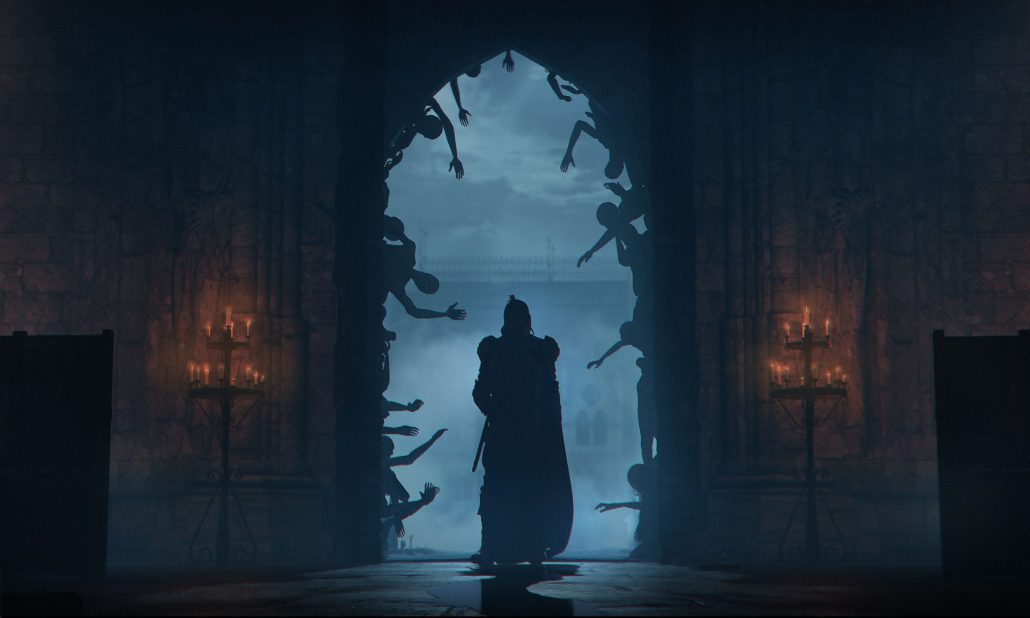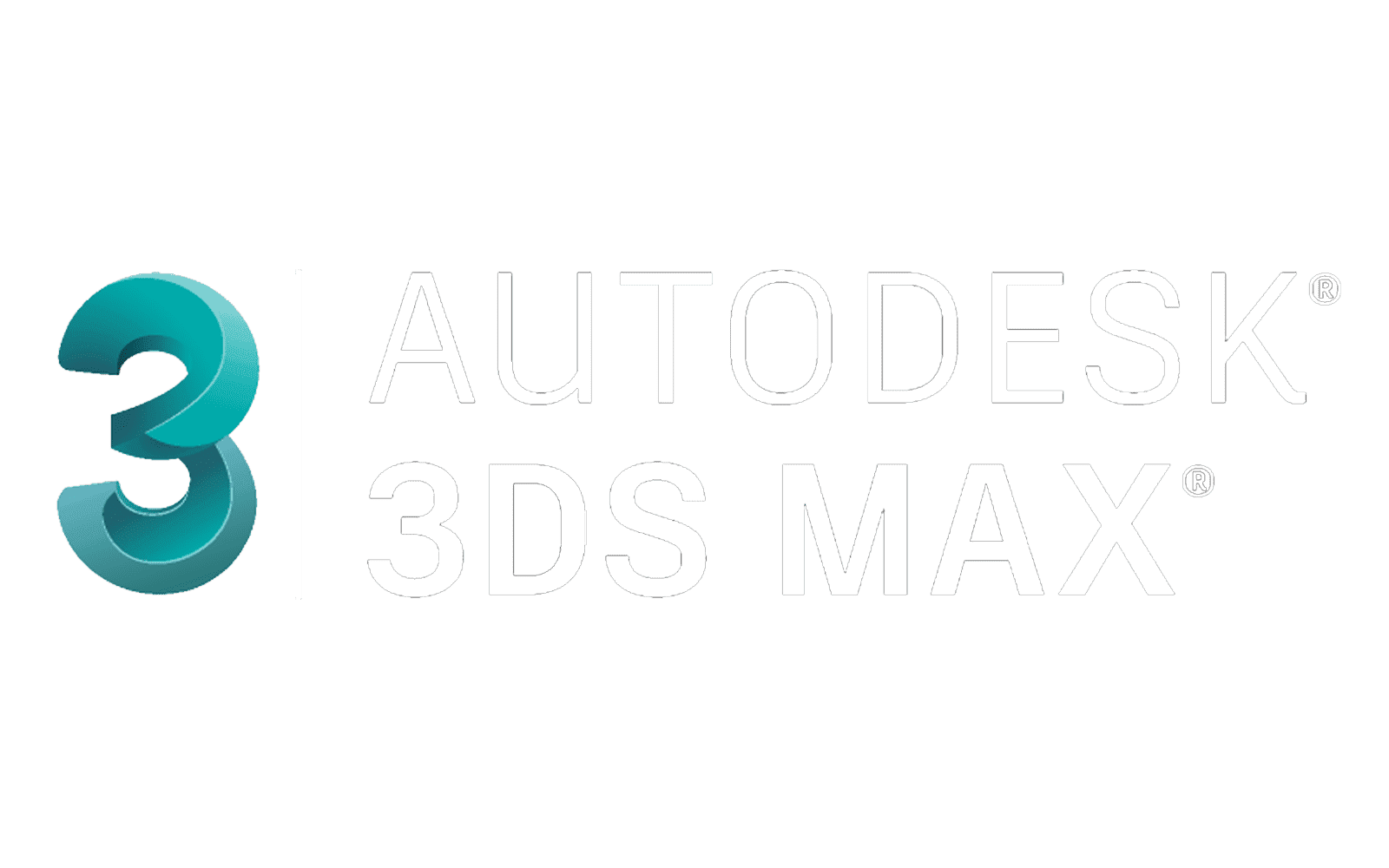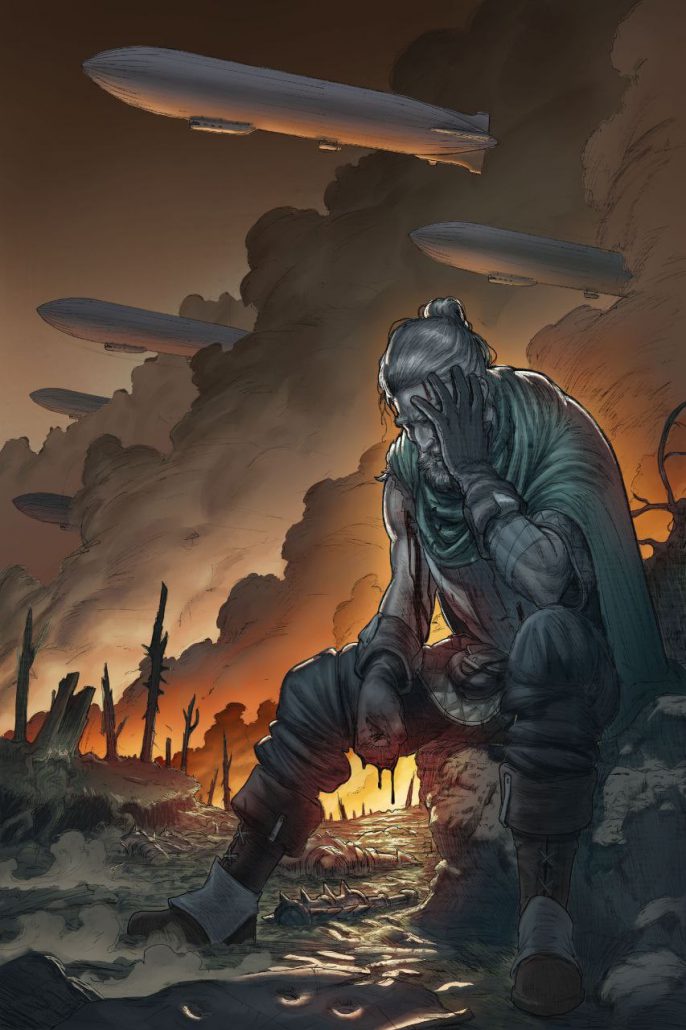concept art studio
Creating concept art is an essential first step in establishing the mood and tone of any project. It’s the process where our skilled artists take your ideas and transform them into stunning visuals, whether it’s a bizarre location or a complex character. Our team in our concept art studio is passionate about bringing your imaginations to life, infusing them with character, emotion, and depth. With our creativity and expertise, we’ll help you create a unique and engaging world that captivates your audience.
OUR VIDEO GAME CONCEPT ART SERVICES
At our concept art studio, we’re passionate about providing a wide range of concept art services. We’ve got a fantastic team of talented artists, and we’re always on the lookout for new and exciting projects to tackle. Our ambition and creativity know no bounds, and we’re committed to delivering a truly unique artwork that exceeds your expectations.


We understand that characters are at the heart of any unforgettable story. When it comes to character creation, we believe that every detail matters. Our team carefully considers the backstory, personalities, superpowers, motivations, and story arcs of each character, ensuring that they are fully fleshed out with depth and dimension. At our concept art studio, we help ensure that your characters are engaging and relatable and leave a lasting impression on your audience. Our concept art services in this field include:
- Character design
- creature design
- Mech design
- Outfit/props/skins
Environment is the stage where the story unfolds. It doesn’t matter where it is set, a gloomy village or a mysterious underwater world. what truly matters is the atmosphere and tone that our artists can bring to these settings. Our concept art services here include:
- Keyframes
- Level art
- Vehicle design
- weapon design
- prop/furniture design
we specialize in creating intricate illustrations for a variety of purposes. We understand that each project is unique, and we work closely with our clients to ensure that their specific requirements are met. Regardless of how you communicate your vision to us, our skilled artists will bring it to life in a way that meets or exceeds your expectations. Our illustration services include:
- card illustration
- table-top games illustrations
- avatar and icon illustrations.
Our Technological Expertise in concept art studio










FAQ
What is game concept art?
Concept art in gaming involves designing and visualizing the intended look, tone, and style of a game prior to its development phase. It actually serves as a blueprint for the look and feel of the game and helps guide the production of finished artwork such as illustrations or 3D models.
How do we create concept art in our studio?
At our concept art studio, our skilled artists will first collaborate with you to understand your vision. With their creativity and artistic tools, they then transform your ideas into stunning visual representations. We will keep you updated on our progress throughout the production process. We value your feedback and are committed to implementing it at any stage of development to ensure your satisfaction.
Why video game concept art is so important?
Concept art is a crucial part of game development as it helps in visualizing game design, setting the mood and style, character design and world-building, and marketing and promotion. Without concept art, it would be difficult for game developers to create a visually stunning and immersive game experience.
Who uses concept art?
Concept art is utilized by various professionals and industries that involve visual storytelling, design, and creativity, like:
Game developers: Game developers use concept art to visualize characters, environments, props, and other elements of their games. It helps them establish the visual direction, mood, and overall aesthetics of the game.
Film and animation studios: Concept art plays a vital role in the pre-production phase of films and animations. It helps directors, production designers, and visual effects artists visualize the look and feel of the movie or animation before actual production begins.
Advertising and marketing agencies: Concept art is often used in advertising campaigns to convey ideas, create visual representations of products or concepts, and inspire creative direction for commercials, print ads, and digital marketing.
Illustrators and comic artists: Concept art serves as a starting point for illustrators and comic artists, helping them bring their ideas to life and establish the visual style and narrative of their work.
Industrial designers: Industrial designers use concept art to explore and communicate design concepts for products, vehicles, architecture, and other physical objects.
Theme park and amusement park designers: Concept art is employed in the early stages of designing theme park attractions, rides, and immersive experiences. It helps imagine and visualize the intended guest experience.
Concept art studios and freelancers can help these professionals and industries achieve what they need.
What is the difference between concept art and illustration?
While both concept art and illustration involve creating visual art, concept art is focused on developing new ideas and exploring visual concepts, while illustration is focused on supporting and enhancing written or spoken communication.
How can you find a proper concept art studio?
To find a proper concept art studio, start by researching online and checking their portfolios. Ask for referrals from friends. After choosing one, contact the studio and ask questions about their process, timeline, and pricing. A good studio should be able to communicate effectively and be transparent with their clients. Choose a studio that is willing to collaborate with you throughout the process. They should be open to feedback and be able to provide solutions to any issues that may arise.
Can 3D be concept art?
Yes, 3D can be considered as concept art. Traditionally, concept art was primarily created in 2D using traditional mediums or digital painting software. However, with advancements in technology and the rise of 3D modeling and rendering tools, concept art can now also be created in a three-dimensional format.
In the context of 3D concept art, artists use 3D modeling software to create virtual representations of characters, environments, props, and other elements of a project. These 3D models can be explored from different angles and provide a more realistic and detailed representation of the final design.
3D concept art allows for a more immersive and accurate visualization of the intended vision, especially in industries such as video games and film production where three-dimensional assets are crucial. It helps artists, designers, and creative teams to refine and iterate on the design, explore different lighting scenarios, and test out ideas in a more dynamic way.
So, while traditional 2D concept art remains prevalent, 3D concept art has gained significance and has become an integral part of the concept art process in many industries.
How long does it take to receive concept art deliverables?
The time it takes to receive concept art deliverables can vary depending on several factors, including the complexity of the project, the scope of work, the number of revisions required, and the efficiency of the communication between the client and the concept artist.
In general, the turnaround time for concept art services can range from a few days to a few weeks. For simpler concepts or single illustrations, it may take a shorter time, such as a few days. However, for more complex or detailed concepts, or projects that require multiple iterations and revisions, it may take several weeks to finalize the deliverables.
The timeline also depends on the availability and workload of the concept artist or studio. If they have a busy schedule or multiple ongoing projects, it may affect the delivery time.
To ensure a smooth and efficient process, it's important for the client and the concept artist to have clear and detailed discussions about the project requirements, objectives, and deadlines. Providing comprehensive briefs, reference materials, and timely feedback can help expedite the concept art process.
Can concept art services assist with art direction and visual development?
Yes, concept art services can indeed assist with art direction and visual development. Art direction involves establishing the overall artistic vision and style of a project, while visual development focuses on exploring and refining the visual aspects of a concept.
Concept artists play a crucial role in shaping the art direction and visual development of a project. They work closely with art directors, creative directors, or project leads to understand the project's goals, themes, and desired aesthetic. Based on this information, concept artists create visual representations and explore different design ideas, styles, and moods.
Through their expertise in composition, color theory, form, and storytelling, concept artists contribute to the development of key visual elements such as characters, environments, props, and overall visual motifs. They may create sketches, mood boards, color studies, and detailed illustrations to communicate their ideas and provide a visual reference for the art direction.
Concept art services can provide valuable support in guiding the visual direction of a project, ensuring a cohesive and compelling visual narrative. They assist in establishing the desired mood, tone, and atmosphere of a project, helping to define its unique artistic identity.
By collaborating with concept artists, art directors and project leads can benefit from their creative insights, artistic expertise, and ability to translate ideas into visually striking images. The concept art services can aid in setting the artistic guidelines, informing the production pipeline, and aligning the creative team's vision.
What is the difference between a concept artist and designer?
A concept artist is responsible for visually conceptualizing and illustrating the initial ideas and designs for characters, environments, and objects within a project. Their work sets the visual direction and serves as a foundation for the project's aesthetics.
On the other hand, a designer focuses on crafting the functional aspects, mechanics, and user experience of a project. They determine how players or users will interact with the elements created by concept artists, ensuring engaging and balanced gameplay or user engagement.
How can I become a concept artist in the industry?
To become a concept artist, cultivate strong artistic skills by practicing drawing and painting regularly. Develop proficiency in digital art tools like Photoshop and industry-specific software. Study fundamental art principles such as anatomy, perspective, and color theory to create compelling and realistic concepts.
Build a diverse portfolio showcasing your versatility in designing characters, environments, and objects. Attend art school or take online courses to refine your skills and gain insights from experienced professionals. Network with other artists and attend industry events to stay updated on trends and opportunities.
Internships or freelance projects can provide valuable experience and help you establish a presence in the industry. Seek feedback on your work and continuously improve based on critiques. Adaptability is crucial, so stay open to learning new techniques and styles.
Finally, try to create an online presence through a website or social media to showcase your portfolio and attract potential clients or employers. Engage with the artistic community, share your work, and participate in online challenges or contests to gain exposure.
Remember, being patient and persistent is very important!
What are the challenges of creating concept art?
Interpreting Ambiguous Descriptions: Concept artists often work with briefs or descriptions that may be vague or open to interpretation. Translating abstract ideas into visual representations requires a high level of creativity and the ability to understand and interpret sometimes ambiguous or evolving concepts.
Meeting Client Expectations: Concept artists often work closely with clients or art directors, and aligning the artistic vision with client expectations can be challenging. Balancing personal creativity with fulfilling the client's specific requirements and preferences is a delicate task that requires effective communication and flexibility.
Time Constraints and Deadlines: Concept art is frequently created under tight deadlines, especially in industries like game development or film production where pre-production schedules are demanding. Managing time efficiently while maintaining artistic quality is an ongoing challenge for concept artists.
terative Design Process: Concept art often involves multiple iterations and revisions based on feedback. Embracing a fluid design process while continuously refining ideas can be mentally taxing. Adapting to feedback and making necessary adjustments without compromising the essence of the concept is a persistent challenge.
Technological Advancements: As technology evolves, concept artists may need to adapt to new tools and techniques. While these advancements can enhance the creative process, staying updated and integrating new technologies into one's workflow can pose a challenge, particularly for artists who are not as familiar with digital tools.
Collaboration and Communication: Collaboration is often integral to concept art creation, requiring effective communication with other team members such as 3D modelers, animators, or level designers. Ensuring that the concept translates well across different stages of production and aligns with the overall project vision is a constant challenge.


The Importance of Concept Art Studios
Concept art studios serve as foundational pillars in various creative industries, offering a space where ideas are conceptualized and visualized. They play a pivotal role in establishing the visual direction of projects, contributing to the development of aesthetics, themes, and narrative elements. Concept art studios provide essential support in the pre-production phase, helping to refine and solidify creative concepts before they are implemented.
The Role of Concept Art in Video Games
In video game development stages, concept art serves as a blueprint for the game’s visual elements, including characters, environments, props, and more. It aids developers in envisioning and iterating upon the visual aspects of their games, shaping the overall look and feel. Concept art is crucial for establishing the art direction, guiding video game level design, and ensuring consistency in the game’s visual identity.
Challenges Faced by Concept Art Studios
Amidst their creative endeavors, concept art studios encounter a range of challenges that shape their workflow and output.
- Tight Deadlines: Concept art studios often operate under tight schedules, requiring artists to produce high-quality work within limited timeframes. Meeting project milestones and deadlines while maintaining artistic standards can be demanding.
- Evolving Project Requirements: Projects in concept art studios may undergo frequent revisions and shifts in direction, leading to uncertainty and adaptation challenges for artists. Flexibility and the ability to pivot quickly are essential skills in such environments.
- Balancing Creativity with Practicality: Artists must strike a delicate balance between artistic vision and practical considerations such as technical feasibility, budget constraints, and client preferences. Finding this equilibrium can be challenging, particularly when navigating conflicting demands.
- Client Expectations: Meeting or surpassing client expectations while staying true to artistic integrity can be a significant challenge for concept art studios. Aligning creative visions and managing feedback effectively are crucial for successful collaborations.
- Staying Ahead of Trends: Keeping abreast of industry trends, technological advancements, and evolving aesthetic preferences is essential for concept art studios to remain competitive. Continuous learning and skill development are necessary to stay relevant in a rapidly evolving landscape.


Let's discuss your idea
We’d love to chat with you about your project and provide you with a quote. Simply fill out the form below and we’ll get back to you as soon as possible.

